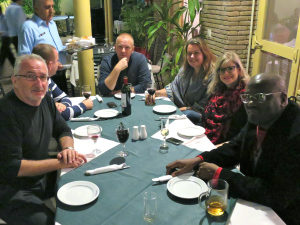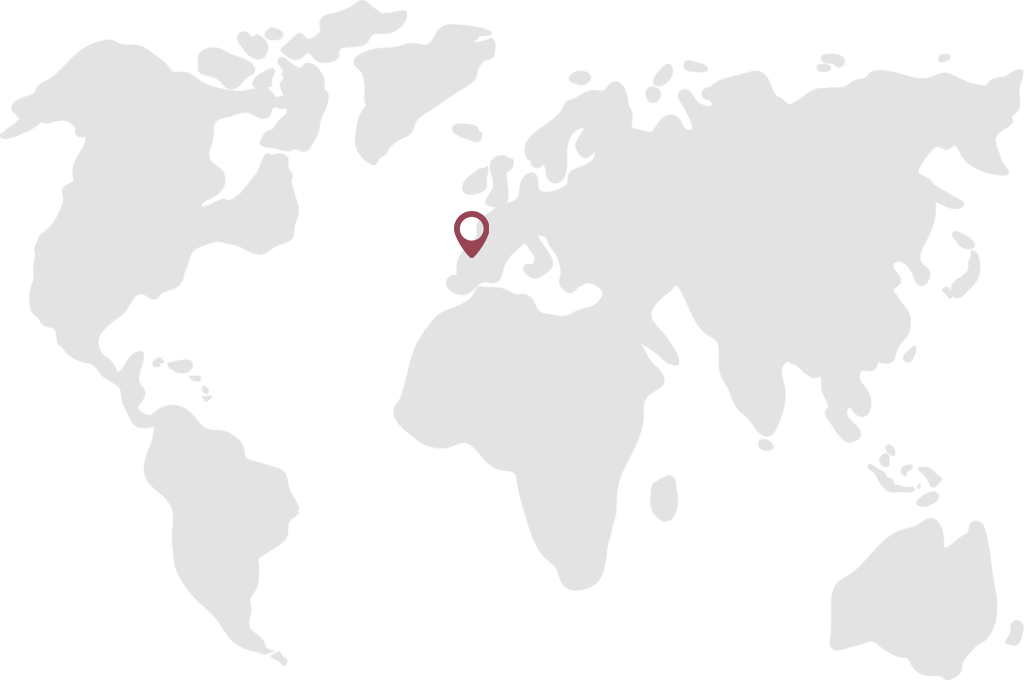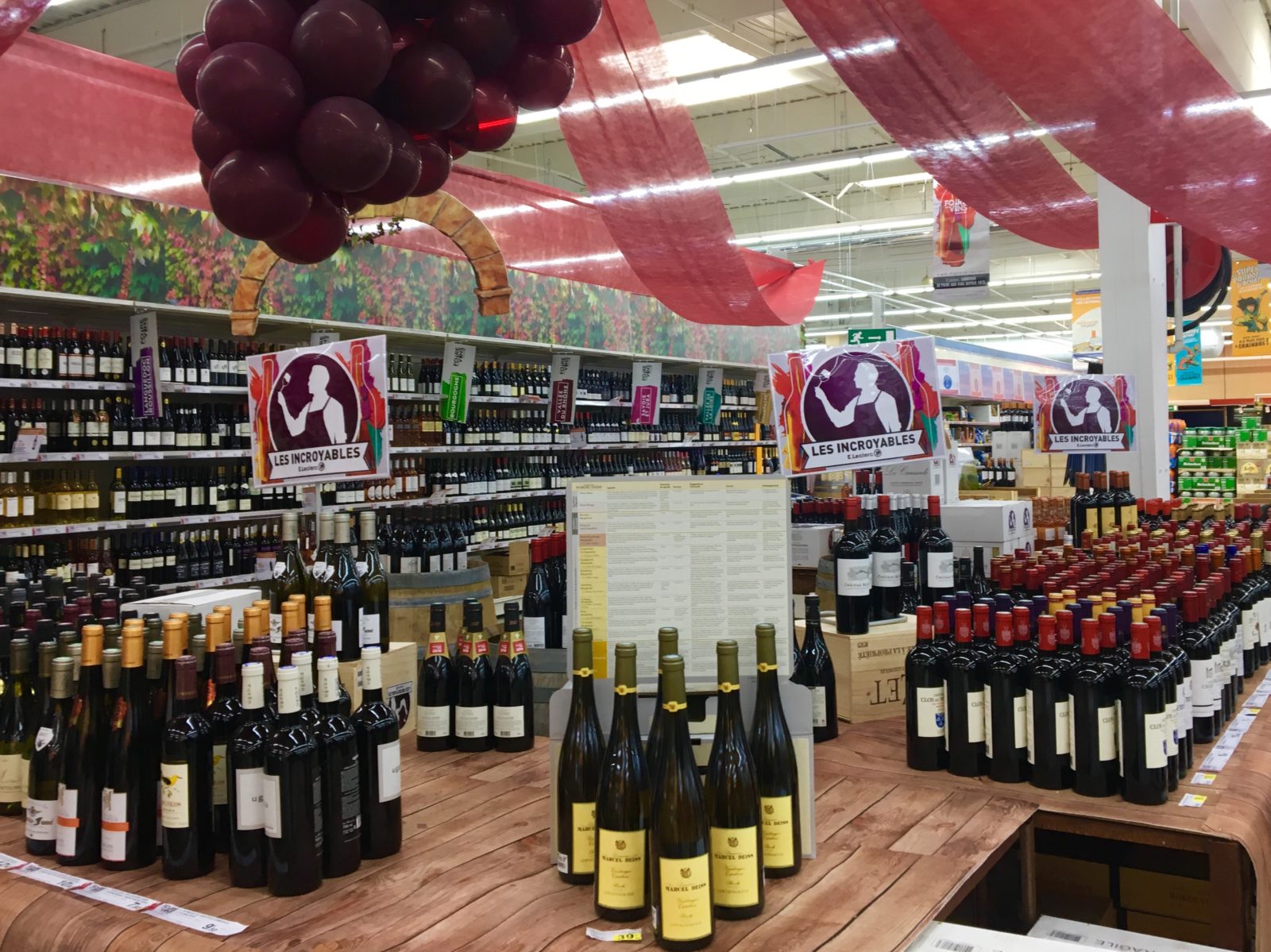
In 1973 the French supermarket chain LeClerc held a wine sale called ‘Foire aux Vins,’ or the ‘fair of wines.’ Wines from all over the country were discounted, put on sale and were soon snapped up by bargain hunters.
The practice has blossomed, and now most supermarket chains in France do alike. Some do so both in fall and spring, although the fall season has most sales.
I was invited last night and showed up at LeClerc at 7.50 p.m., took a grocery cart, and was held at bay outside the doors until the main grocery store closed. At 8.10 p.m., the doors opened and a parade of shoppers bust forward clinging onto their carts.

I had expected a wine tasting only. Not so. A platoon of ladies greeted entrants by handing out plastic glasses filled with bubbly, and winemakers gave tastings along the aisles. I soon stuffed bottles of wine from Languedoc, Châteauneuf-du-Pape, the Loire Valley, Provence and Bordeaux into the cart, as well as bottles from Italy and Austria. Most ranged in price from about five to fifteen Euros, although there were bottles from Saint-Émilion and elsewhere for up to 80 or 90 Euros.
In minutes, the cordoned segment of the supermarket turned into a sort of polite French carnival. The empty cartons I had put into my cart kept getting pilfered by others when I looked away, and wine sellers and makers not seen in months shouted their hellos across aisles. I watched two men who found a shelf of Languedoc wine selling for 2.50 Euros a bottle rapidly clean off the entire shelf into their basket with hungry gusto. A female doctor we know, who somehow managed to get into the store early, rapidly loaded up her cart, which was almost twice her size.
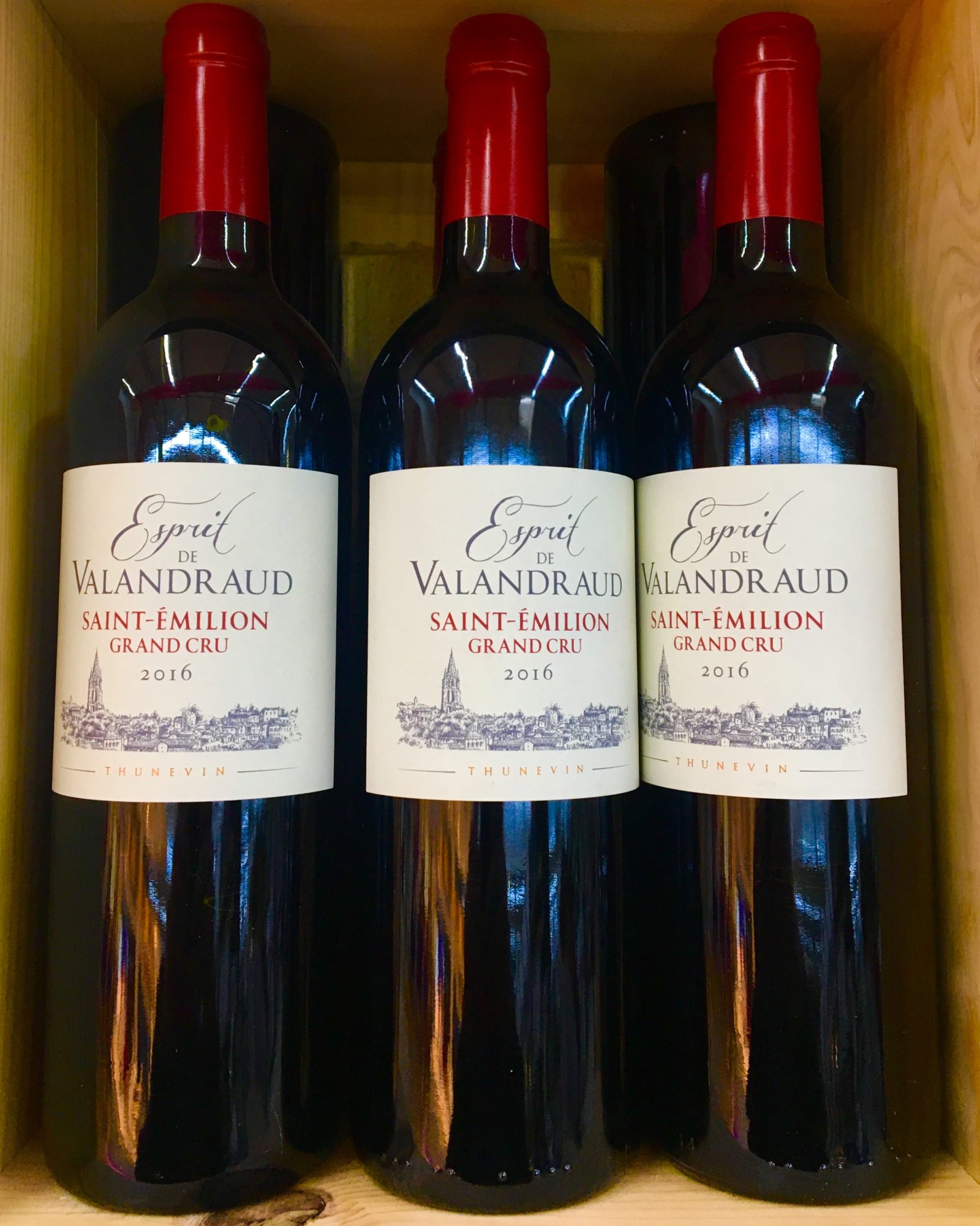
After loading a few boxes with bargains from all over France, we pushed the cart to the check out and paid, happy to have scored bargain wines and to have participated in a slice of French consumer culture.
Comparing local prices to those on the Vivino app (which is somewhat of an average for the U.S.), retail prices in the U.S. range from being similar to those in France to about 75 percent more.
As an example, a few bottles are listed below with their equivalent Euro prices converted to U.S. dollars, as well as their U.S. price.

Savigny-Lés-Beaune Sous Lavières. 2017. $22.50 ($39.00 in U.S.). [Burgundy]
Cht de la Gardine Châteauneuf-du-Pape. 2016. $35.65 ($44.55 in U.S.) [Rhone]
Jean Chanussot Mercurey. $18.50 ($24.25 in U.S.) [Burgundy]
Cht de Cazeneuve Cynarah Pic Saint Loup. 2016. $10.30 ($14.99 in U.S. [Languedoc]
Cht Larrivet Haut-Brion. 2013. $29.40 ($27.20 in U.S.) [Bordeaux]
Cht La Tour de Mons, Margaux. 2015. $20.20 ($33.99 in U.S.) [Bordeaux]
Cht Haut Bourcier Cuvée Remy. 2012. $9.25 ($15.99 in U.S.) [Blaye, Bordeaux]
Cht Roland La Garde Tradition. 2015. $6.90 ($15.10 in U.S.) [Blaye, Bordeaux]
Campo Ai Sassi Rosso di Montalcino. 2016. $17.26 ($18.00 in U.S.) [Tuscany, Italy]
Weingut Autrieth Grüner Veltliner Eiswein. $14.75 ($14.86 in U.S.) [Austria]
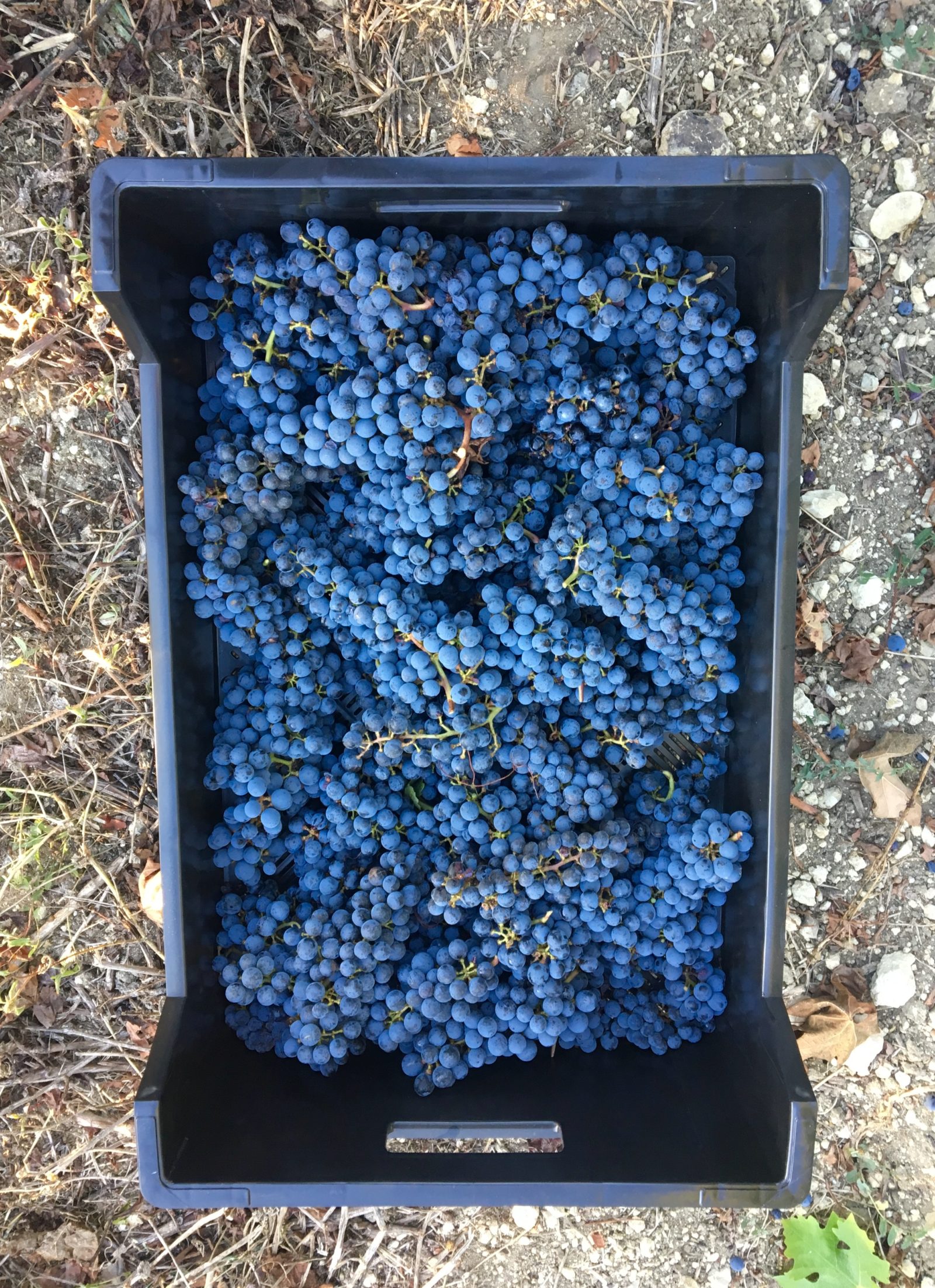
I checked the purchased wines with U.S. prices when I got home, and mistakenly thought that my Esprit de Valandrau from Saint-Émilion cost 19 Euros locally and $178 in the U.S.
Whoaa! I hustled back to LeClerc this afternoon to buy more bottles. But, no. Truth is, the Esprit is the second label, which costs comparatively the same in the U.S. as in France. The $178 price is for Valandrau’s top tier wine.
False alarm.
Thanks for tuning in again.
My latest Forbes pieces are here and include interviews with two who have hiked the El Camino de Santiago de Compostela pilgrimage trail in Spain, sparkling wine from near Italy’s Dolomite Mountains, why I grapple with grappa, the virtues of Hungarian oak and biodynamic wine making in Oregon.

Finally, as I mentioned on social media—we recently harvested the first half of our one hectare (2.5 acre) Etalon Rouge (‘Red Stallion’) vineyard of Cabernet Sauvignon grapes. This year looks like it might just produce a Stellar Vintage!



